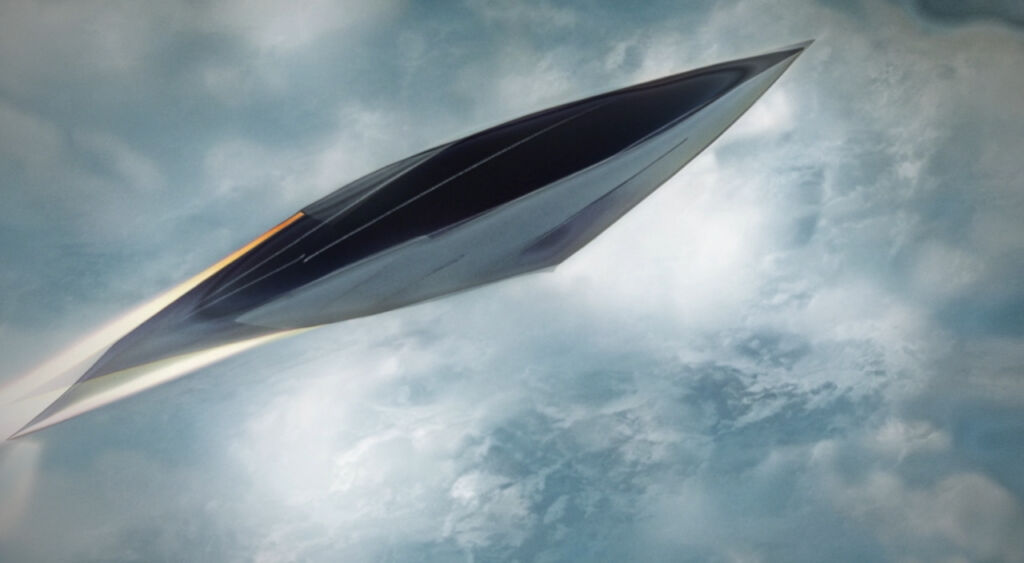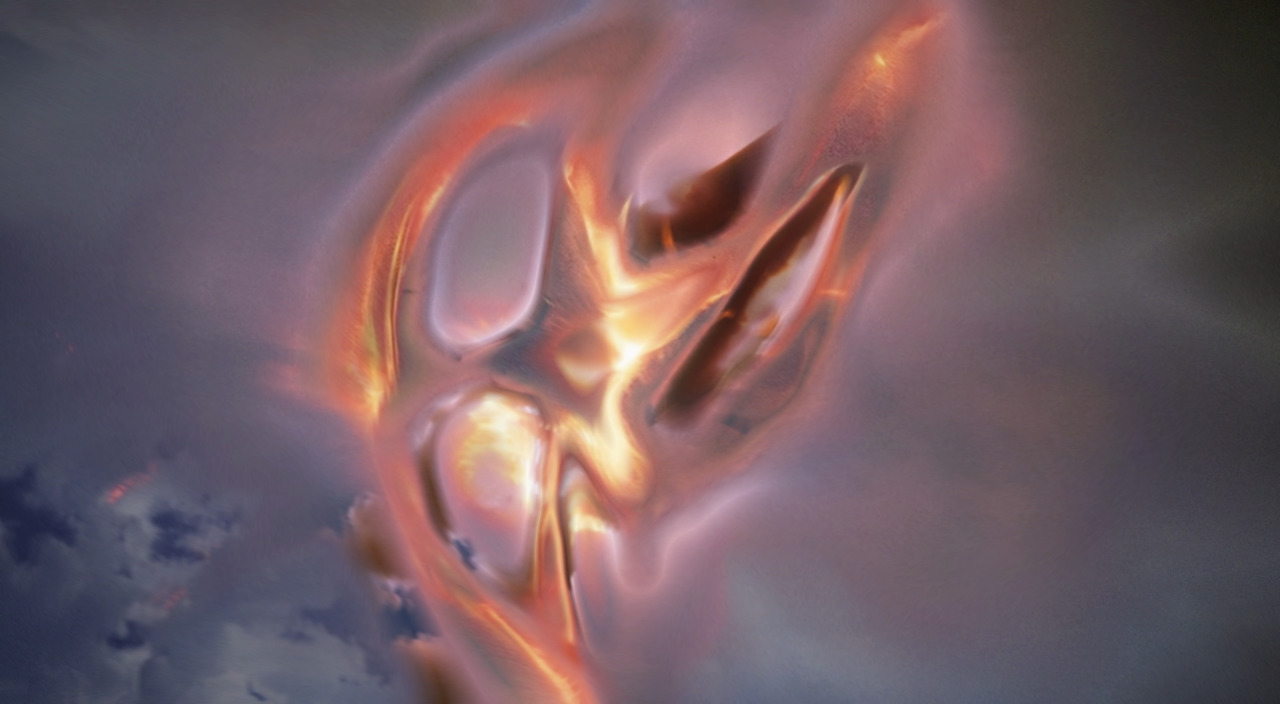Text by CLOT Magazine

We present a new video for a track part of the new Tresor350 compilation, yet, for Jean Redondo’s ‘Hypersonic’ created with AI by Malik Arbab, who also designed the album sleeve.
The compilation showcases artists whose music resists easy definition, calling upon club mainstays and newcomers to envision the future of electronic music. In English, the word yet can morph into different contexts, therefore, being a fitting title for this selection of tracks. Featuring the work of 13 visionary artists, the project showcases the dynamic fusion of technology and art in today’s music landscape Malik also provides artwork for the Tresor Club’s event flyers, and French artist Jean Redondo is best known for his work for the BFDM crew.
Redondo shares that Hypersonic was inspired by the current political instability and reading a lot about weapon technologies nowadays. Stunned by how terrible, powerful and creative they currently are. That inspired him, and I tried to depict it through music. This track is far from being my most accessible one because of its speed, violence and complexity. Some people can be repelled by it, naturally. Malik managed to smooth the angles by making intriguing visuals that make you wonder what will follow.
Malik Arbab has been recently working on his artistic vision with the latest advancements in machine learning while working on the visual components of the compilation. The vinyl album cover, designed using AI-driven techniques, encapsulates the unique sonic identity of each artist and forms a cohesive aesthetic experience.
For Jean Redondo’s electrifying track Hypersonic, he used AI visualisation methods to breathe life into the song’s hypnotic rhythms and atmospheric vibes. For him., this project was an exciting exploration of the intersection between technology, art, and music, and I am proud to have contributed to Tresor Berlin’s legacy of innovation and creativity.
They both share that collaboration was an enriching and inspiring process for both Redondo concludes that Tresor’s motto is «building bridges» (a reference to the Detroit-Berlin ’90s connection) and that by connecting Malik and Jean in their respective art forms, they honoured it and allowed them to reach our common target.
You mention that the current political instability inspired Hypersonic; how did you translate your thoughts on the topic into sounds?
Jean: To give you a bit of context, I try to keep myself informed on scientific breakthroughs, I often get intrigued and inspired by those things. In an age where humans blend more and more with technology, science can increase our quality of life and be a great menace to ourselves.
One night in 2022, a few days after the beginning of Russia’s war with Ukraine began, I had some nuclear anxiety, clearly induced by too much weed. All night I kept my eyes open and thought about not-really-funny scenarios. I’m not easily scared, but if one topic always makes me shiver, it’s military-induced radiation and bio/chemical weapons.
After I got in touch with Thomas Hoffmann and Felix Moser from Tresor, I decided to use that inspiration for the compilation’s track. The fact it was for Tresor played a role in my choice. Historically, It’s one of the most important Techno labels. Techno in the large sense (if you count industrial, electro and all futuristic styles) is club music, but as the name indicates, it’s music made with technology, about technology. I focused on this aspect while trying to keep it working for clubs.
To translate my thought of a hypersonic missile (glide vehicles that carry nuclear warheads especially ), I wanted the music to be evocative of something mechanical, of crazy trajectories, sharply designed, fast-paced, energetic, menacing, utterly destructive and ending with desolation. The need for a high bpm and my love for Chicago music made me go for a footwork type of beat to lift the other sounds.
I worked on it for about a month and a half and did some back and forth with my friend Thomas Hoffmann who gave me his point of view on the construction of the track.
Also, on the technical side, did you find yourself using a particular type of equipment that helps you translate those ideas?
Jean: On the technical level, digital nowadays offers infinite possibilities, so I left my machines aside and went for 100% computer music. I applied many resampling techniques on the first part of the track, heavy effects of stutter, tape stop, and distortion to make the second one, for example.
I did the Hypersonic voice with a free wavetable synthesiser that allows you to do text-to-speech and messed with it.
I also used a plug-in that makes a variety of religious/mystical choirs. I did it because those weapons, by their immense power, have some god of destruction-like qualities.
How was the collaborative process between you both? And how do you think you complemented each other’s work?
Jean: Thomas and Felix informed me that Malik Arbab would produce a video in March 2023 after the track was finished. I was thrilled about it because I loved his work for the compilation visual. I thought that his machine-learning process would be the perfect fit for the track. I trusted him 100% on the result and gave zero input in making the video.
His AI process allows him to get images that are simultaneously familiar to our minds and completely otherworldly. This is something that always gets me when I witness a piece of art, whether it’s visual or sonic.
This track is far from being my most accessible one because of its speed, violence and its complexity. Some people can be repelled by it, naturally. I think Malik managed to smooth the angles by making intriguing visuals that make you wonder what will follow all along.
The images he produced are faithful to the track emotions and to the theme, but at the same time, abstract and leave the door open to interpretation. He gave it another level of understanding for the audience.
I’d be excited to renew the experience with Malik to explore topics like mass surveillance, genome manipulation, and facial recognition, (what’s better than AI to illustrate it?) but also, hopefully stuff that is on the brighter side of life. The darker the times, the greater the need for beauty.
Malik: Collaborating with Jean Redondo on this project was an enriching experience that seamlessly blended our unique artistic strengths. Our creative process was rooted in mutual respect for each other’s craft and a shared commitment to pushing the boundaries of what’s possible in our respective fields.
I was deeply inspired by Jean’s innovative approach to techno music and his ability to craft both evocative and exhilarating soundscapes. His work on “Hypersonic” provided the foundational pulse, the emotional core, around which the visual narrative was constructed. His openness to experimental ideas and his trust in my vision was instrumental in bringing the music video to life.
In turn, my work aimed to provide a visual dimension to Jean’s music, translating the sonic intricacies of “Hypersonic” into tangible, dynamic visuals. By incorporating AI and machine learning into the design process, I created a visual experience that mirrors the track’s rhythm, energy, and mood.
We found that our work greatly complemented each other. Jean’s track set the emotional landscape, and my visuals provided the topography, creating a fully immersive audio-visual experience. It felt as though we were building a bridge between our two art forms, with Jean’s music on one side, my visuals on the other, and our shared vision as the connecting path.
The collaboration was an exercise in trust and creative synergy. We both brought our unique perspectives and skills to the table, and the final product is a testament to the magic that can happen when two artists join forces to create something truly unique. It was a privilege to collaborate with Jean on this project, and I’m excited about the potential for future collaborations.
Could you elaborate a bit more on the creative process behind the video’s production? What were the main aesthetic inspirations? And also, how do you think the visuals you have created connect to the sound or help drive the track’s narrative?
Malik: The creative journey began with a deep immersion into the track itself. I spent time internalizing the intricate layers of the music, allowing its rhythm, pace, and mood to inform the visual narrative. The core idea was to create a visual experience that would complement the track and enhance the listener’s emotional and sensory connection to it.
Drawing inspiration from the likes of visionary digital artists such as Refik Anadol and Quayola, I wanted to push the boundaries of traditional music video aesthetics. I was particularly drawn to their use of AI to create immersive and fluid visual experiences. Their work, along with the pulsating energy of techno culture, heavily influenced the direction I took.
Regarding the connection between the visuals and the track, I used machine learning algorithms to analyze the nuances of “Hypersonic.” The AI dissected the track’s components – rhythm, tempo, frequency, and even emotional intensity – and generated visual elements in the response. Each beat, each rise and fall in the track, triggers a specific visual pattern or movement. The resulting visuals, therefore, are not arbitrarily paired with the music but are an intricate, algorithmic interpretation of the track itself.
I intended to visually echo the track’s narrative, highs and lows, frenetic energy, and quieter moments. For instance, rapid, swirling visuals accompany intense, high-tempo sections, while slower, smoother movements sync with calmer parts of the track.
Overall, the video aims to serve as a dynamic, visual counterpart to the track, enhancing the listener’s experience by providing a tangible representation of the music’s ebb and flow. It explores how technology can be harnessed to augment our music experience and create a multidimensional sensory journey.
What does using AI bring to your creativity? And What have been your main findings while working with AI technology? ie, what would be your “favourite” side and the most challenging one?
Malik: AI is not just a tool but an active collaborator in the creative process. It brings a unique dynamism and unpredictability that can push the boundaries of what’s possible. It allows me to experiment, iterate, and rapidly explore new forms and structures, which would be time-consuming or even impossible with traditional methods.
While working with AI technology, one of the main findings has been its ability to illuminate patterns and connections that might not be immediately apparent to the human eye or ear. It can analyze complex data sets and generate insights that become the basis for new aesthetic explorations. This has fundamentally changed my approach to design, making it more data-informed and iterative.
My “favourite” aspect of working with AI would undoubtedly be the element of surprise it brings to the creative process. It’s incredibly rewarding to input data or a set of parameters and then see the system generate something entirely unexpected and often beautiful. It’s a form of co-creation where the AI mirrors your ideas but also introduces its own interpretations.
The most challenging aspect, however, is finding the right balance between control and autonomy. With AI, there’s a fine line between directing the creative output and allowing the algorithm to lead. Too much control can limit the system’s potential for generating novel ideas, while too little can result in output that lacks coherence or relevance. Striking the right balance requires a deep understanding of the system’s capabilities and limitations and a willingness to embrace uncertainty and serendipity.
Ultimately, using AI in my work has expanded my creative vocabulary and introduced new ways of seeing and interpreting the world around me. It’s an ongoing journey of exploration and discovery, and I’m excited to see where it leads next.






